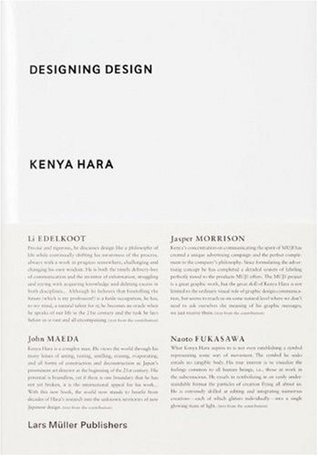What do you think?
Rate this book


467 pages, Hardcover
First published October 22, 2003



"The more firmly we are convinced that we've identified an object, the less precisely we understand it. The 21st century is an age of discovery of astonishingly fine designs found right in our midst, in our daily lives. We used to design mere stimulation, but now we are part ways with that past and look at the ordinary with clear eyes, to yield new thinking on design."
"Come to think of it, the sense of sight is a response to the stimulus of the retina, a circular membrane 4 centimetres in diameter. The sense of hearing is likewise a response to movement of air that's perceived by the eardrum, a membrane only 8 mm in diameter set deep in the ear [...] A human being is like a rubber ball wrapped in an extremely delicate membrane. Different areas on the ball's surface elicit a different sense."